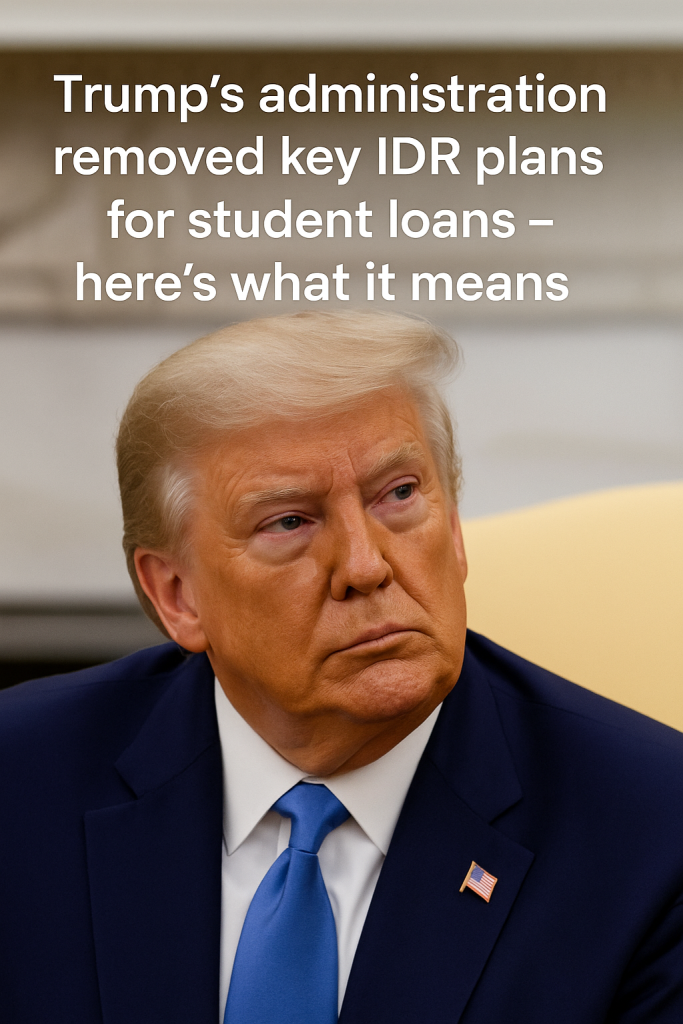During the Trump administration, significant shifts occurred in the management of federal student loan repayment options, most notably the removal and restructuring of certain Income-Driven Repayment (IDR) plans. As millions of borrowers continue to grapple with student debt, understanding these changes—and their lasting impacts—is crucial, especially in the context of ongoing efforts to reform student loan forgiveness and repayment policies.
What Were the Key IDR Plans Removed?
Income-Driven Repayment plans are designed to adjust monthly federal student loan payments based on a borrower’s income and family size, providing relief to those for whom standard repayment terms are unaffordable. Under previous administrations, multiple IDR options existed, including Revised Pay As You Earn (REPAYE), Pay As You Earn (PAYE), Income-Based Repayment (IBR), and Income-Contingent Repayment (ICR).
During the Trump administration, there was a deliberate move to limit borrower access to certain IDR plans while emphasizing the promotion of the IBR plan as the primary income-driven option. Additionally, efforts were made to tighten eligibility requirements and automatically enroll fewer borrowers into these programs. Certain experimental or pilot IDR options were also curtailed or canceled, reducing borrower flexibility.
Why Were These Changes Made?
The Trump administration argued that some IDR plans were financially unsustainable for the federal government over the long term, raising concerns about increasing taxpayer burdens. The administration also aimed to simplify the borrower experience by consolidating options and curbing what were described as overly generous repayment terms that allowed some borrowers to take advantage of forgiveness after relatively short payment periods.
However, critics contend that these moves disproportionately harmed lower-income borrowers and those with fluctuating incomes, who rely heavily on adjustable payment plans to manage debt. This tightening of access also potentially increased defaults and financial strain for many borrowers.
What Does This Mean for Borrowers Today?
Many of the IDR plans removed or altered during the Trump administration remain unavailable or less accessible, even as new proposals for student debt relief are discussed at the federal level. Borrowers who were previously eligible for more generous repayment plans now may find themselves with limited options, potentially higher monthly payments, and fewer pathways to forgiveness.
Moreover, complex enrollment procedures and strict eligibility criteria have made it difficult for some borrowers to navigate their repayment options, leading to sustained confusion and financial hardship.
Recent Developments and Future Outlook
In the years following these changes, there have been concerted efforts by lawmakers and the current administration to restore and expand IDR options. Proposals include simplifying plan structures, increasing forgiveness caps, and improving borrower outreach and support tools to ensure greater access.
Additionally, new IDR plans under consideration aim to address some of the inequities introduced by prior plan removals, particularly for borrowers from economically disadvantaged backgrounds or with significant debt burdens. However, legislative and administrative hurdles mean that many borrowers face continued uncertainty.
For borrowers, the legacy of the Trump-era removal of key IDR plans underscores the importance of staying informed about evolving repayment options and advocating for policies that prioritize financial sustainability without sacrificing borrower accessibility.
Bottom Line: The Trump administration’s removal and restructuring of key IDR plans significantly altered the student loan repayment landscape, narrowing relief pathways for many borrowers. While efforts are underway to improve and expand income-driven options, the effects of these changes continue to influence student loan repayment challenges today.



